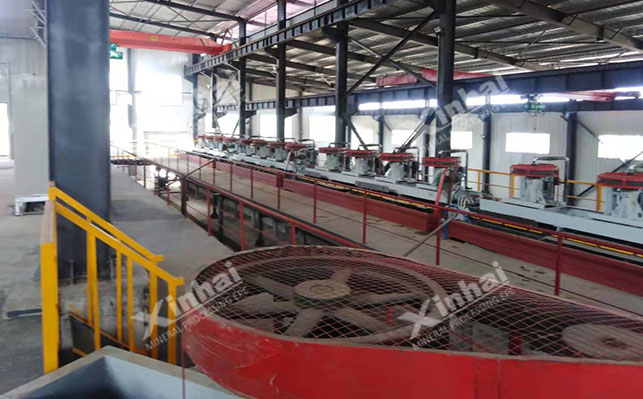The beneficiation method of siderite is not only flotation process, but also gravity separation, magnetic separation, magnetic separation roasting and other methods can be used to separate siderite. But for fine siderite, the flotation process is extremely suitable. The flotation method uses the different hydrophilicity of mineral surface to separate minerals. Useful minerals attach to the bubbles in the pulp and then float to the pulp surface to achieve the purpose of separation. Siderite flotation mainly includes positive flotation method and reverse flotation method.

Positive flotation is to float useful minerals into foam products and leave gangue in pulp for tailing. Siderite positive flotation refers to enriching iron and floating it into foam.
There are two positive flotation methods for siderite (positive flotation with anionic collector), one is acid positive flotation worker, and the other is alkaline positive flotation.
Acid positive flotation: remove the slime after grinding the siderite to the required size, and add fatty acid collector to the deslimed product in neutral or weak acid medium to float iron minerals.
Alkaline positive flotation: grind the siderite to the required particle size without desliming, add soda, etc. as the regulator, and use oxidized paraffin soap and tall oil, etc. as the collector for flotation in weakly alkaline medium. The process is simple in use and low in processing cost. It has great advantages in processing single ores. However, qualified concentrate can only be obtained after multiple cleaning, and the foam is easy to become sticky, making the product difficult to concentrate and filter.
Reverse flotation refers to floating gangue minerals into foam products while leaving useful minerals in pulp. Siderite reverse flotation refers to desilication, which floats gangue such as silicate and quartz into foam, while iron remains in pulp.
There are two kinds of reverse flotation of siderite: anionic collector reverse flotation and cationic collector reverse flotation.
Anionic collector reverse flotation: calcium salt is added in strong alkaline medium to activate quartz, sodium hydroxide or sodium hydroxide is mixed with sodium carbonate, the ph is adjusted to above 11, starch or lignosulfonate is used as iron mineral inhibitor, fatty acids and their modified agents are used as collectors to flotation quartz and other silicates.
Cationic collector reverse flotation: Adjust the pulp pH to 8-9 with sodium carbonate, use starch, dextrin, tannin and other substances to inhibit siderite, use amine collectors to float quartz gangue, and select ether amine as the collector, followed by fatty amine.
The above are two flotation methods commonly used in siderite flotation process. The flotation method is only one of the beneficiation processes for siderite. If you want to determine which beneficiation process is suitable for siderite, you should carry out beneficiation tests. Xinhai can conduct beneficiation tests on ore samples and customize beneficiation schemes for customers.